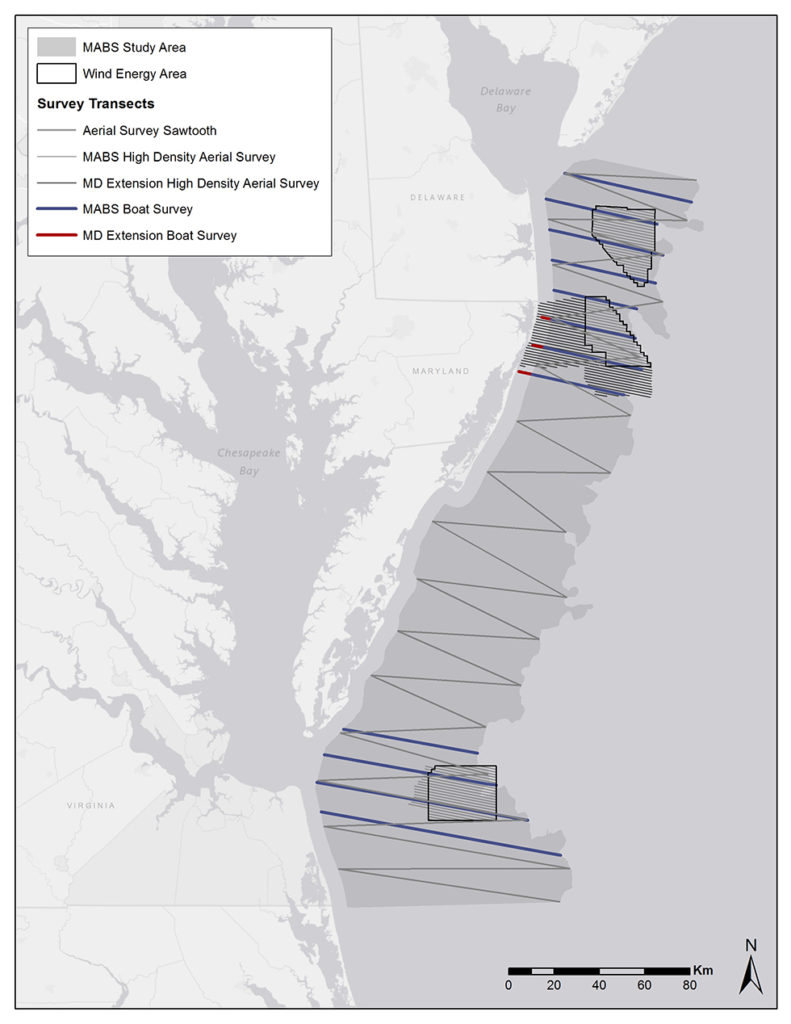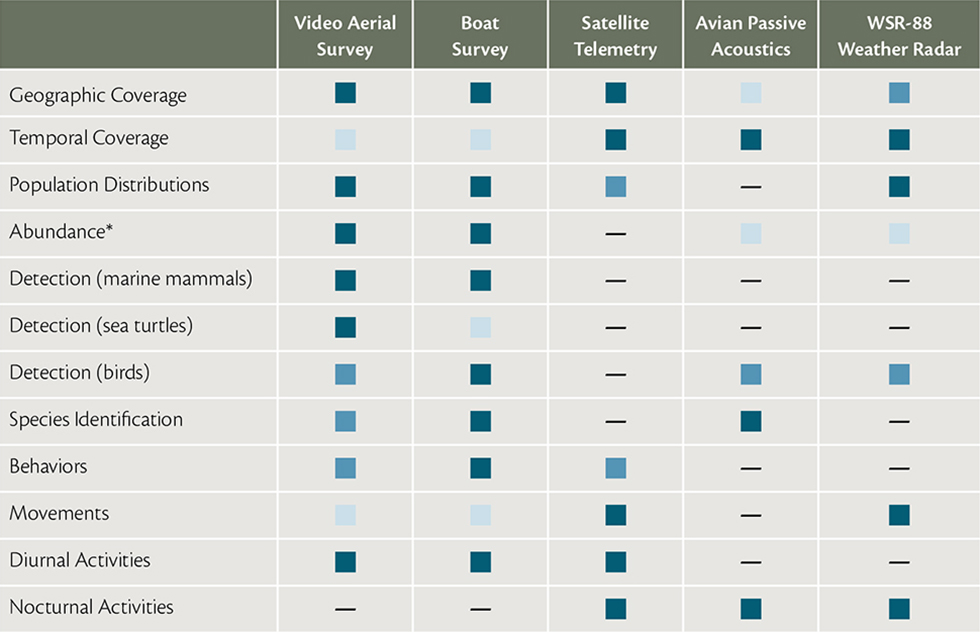This study incorporated a variety of methods for studying wildlife in the offshore environment, each with unique strengths. Boat and digital video aerial surveys are able to capture population-level trends in distribution and abundance, while telemetry studies better capture individual movements, and passive acoustic and weather radar studies provide insight into nocturnal activities of wildlife.
We used several study methods, including boat-based surveys, high resolution digital video aerial surveys, satellite telemetry, and nocturnal migration monitoring to document animal movements, distributions, abundance, and habitat use, using a variety of analytical methods. Combining these methods resulted in a more comprehensive understanding of wildlife patterns in the region.
Study Area

The study areas for the Mid-Atlantic Baseline Study and Maryland projects, with Wind Energy Areas (WEAs) and boat and aerial survey transects. Fine scale aerial transects (20% coverage) were carried out within the WEAs and the Maryland project area.
The Mid-Atlantic Baseline Studies project focused on a 13,245 sq. km area on the Outer Continental Shelf off the coasts of Delaware, Maryland, and Virginia. This study area extended from 4.8 km (3 miles) off the coast to the 30 m isobaths. Beginning in March 2013, surveys were extended south and west of the Maryland WEA.
Integrating Methodologies

*Either absolute or relative abundance.
This figure compares the relative strengths and weaknesses of methods for studying offshore wildlife that were incorporated into this study. Strengths and weaknesses are indicated by depth of color (dark blue = good, medium blue = fair, light blue = poor). A dash indicates that data were not available from this survey method.
By combining boat and aerial surveys, satellite telemetry, and nocturnal migration monitoring, we developed a more complete picture of wildlife populations in the mid-Atlantic study region. Satellite tracking provided data on broad-scale movements of individual birds, including nocturnal locations missing from survey data. Surveys allowed for population-level analyses of abundance and distributions that were not possible with tracking alone.
Photo Credits: Header image © BRI-Jonathan Fiely


